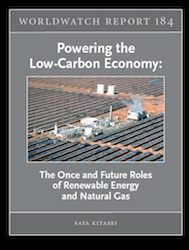 The Indiana State Department of Agriculture has recognized POET President and CEO Jeff Broin with the 2010 Paul Dana Excellence in Bioenergy Leadership Award. POET is the nation’s largest ethanol production company with 27 plants producing more than 1.7 billion gallons of ethanol a year.
The Indiana State Department of Agriculture has recognized POET President and CEO Jeff Broin with the 2010 Paul Dana Excellence in Bioenergy Leadership Award. POET is the nation’s largest ethanol production company with 27 plants producing more than 1.7 billion gallons of ethanol a year.
ISDA Director Joseph Kelsay presented the award during the Greater Indiana Clean Cities Awards Ceremony at the Governor’s Residence in Indianapolis. The Paul Dana Award recognizes those who have exemplified leadership and innovative vision in the bioenergy industry. Governor Daniels and Lt. Governor Becky Skillman established the award to honor the memory of Indy Racing League (IRL) driver Paul Dana, a strong supporter of Indiana’s growing biofuels industry who was killed in a racing accident in 2006. Broin is pictured here during last week’s announcement of ethanol’s new involvement in NASCAR.
Other 2010 Greater Indiana Clean Cities Award recipients include Thornton’s Quick Café and Market for outstanding achievement in the implementation and promotion of E85 retail locations; Doug Henderson of Co-Alliance for outstanding achievement in the sale and support of biodiesel blended fuel; and the City of Indianapolis for outstanding achievement in the deployment of hybrid vehicle technology.
During the awards presentation, Kelsay emphasized the importance of biofuels in Indiana. “Indiana is proud of the rapid success we have had in biofuels production. Indiana’s new ethanol and biodiesel plants have created direct jobs for Hoosier workers and many more in other supporting industries,” he said. Kelsay notes that in January 2005, Indiana had only one ethanol plant and currently the state has 11 completed ethanol plants and two more under construction. Indiana had no biodiesel plants in 2005 and there are now five biodiesel plants with a combined capacity of more than 100 million gallons of biodiesel. He also noted that the proliferation of E85 and biodiesel pumps in the state has grown dramatically in the past five years.







 According to the
According to the 

